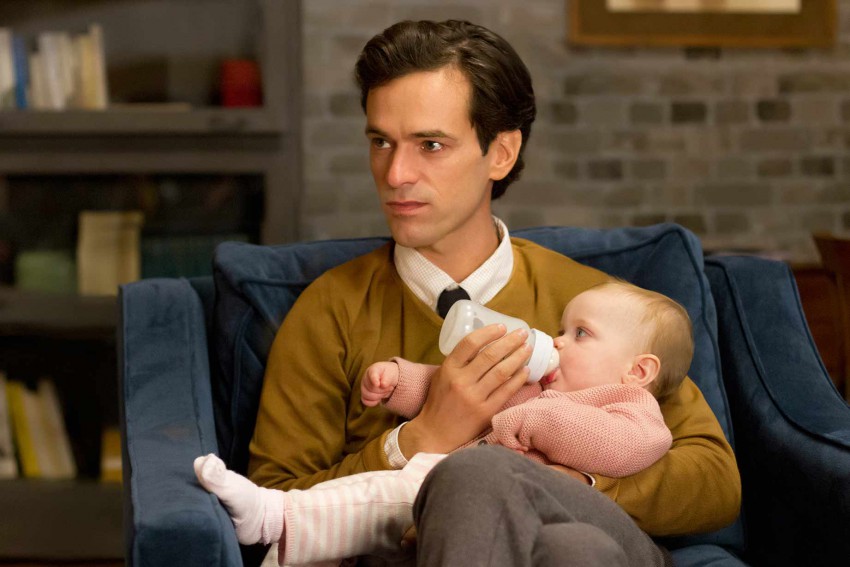Controversy in French Film

On the eve of the Aliance Francaise French Film Festival, we look at the history of controversy in French film.
Since the Charlie Hebdo attacks in January this year, debate has surrounded the lengths and limits of French expression. While media coverage of the event and its fallout has abated in Australia, the wound is still fresh in France and discussion continues worldwide over the validity of Charlie Hebdo’s caricatures. Most recently, renowned Japanese animator Hayao Miyazaki criticised Charlie Hebdo’s editorial, saying, “I think it’s a mistake to make caricatures of what different cultures worship. It’s a good idea to stop doing that.” Yet French expression has a history of controversy, not least in film. With the arrival of this year’s Alliance Francaise French Film Festival, it presents an opportunity to look at French film through this lens of controversy, and what it can tell us about French culture and expression. Throughout the 20th century there was a long line of controversial films that drew ire from all sorts of groups. The Luis Buñuel/Salvador Dali collaborations, Un Chien Andalou and its sequel L’Age D’or in the early 30s were alternately popular and disparaged for their depictions of love, sex and nationalism. Evidently, Buñuel was devastated by Un Chien Andalou’s popularity among the French bourgeoise, as the film sought to criticise their modes of life. A right-wing Spanish newspaper’s reaction to L’Age D’or might have satisfied his controversial yearning though, writing that the film was, “the most repulsive corruption of our age … the new poison which Judaism, Masonry, and rabid, revolutionary sectarianism want to use in order to corrupt the people.” This fear of corruption is a constant in the reaction to controversial French films. Jean Luc Goddard’s 1985 contemporary interpretation of Mary Magdalene’s life, Hail Mary, drew fire from none other than Pope John Paul II, who said the fi m “deeply wounds the religious sentiments of believers”. The film was banned in strongly Catholic states like Argentina and Brazil. Likewise, a cascade of French films have drawn criticism for their depictions of sexuality and sex over the years. 1972’s Last Tango in Paris, directed by Italian Bernardo Bertolucci and starring Marlon Brando, was one such film. Upon the film’s American release, William F Buckley described the film as “pornography disguised as art” and Time Magazine wrote: “Any moviegoers who are not shocked, titillated, disgusted, fascinated, delighted or angered by an early scene in Bernardo Bertolucci’s new movie, Last Tango in Paris, should be patient. There is more to come. Much more.” More recently, the infamous Irreversible by Gaspar Noé, released in 2002, unleashed shock and awe on its audience with its opening presentation of an eight-minute rape scene. Benjamin McCann, Associate Professor of French Studies at the University of Adelaide, says “over the past 10,15, 20 years, there has been a resurgence in French horror films”. While directors such as Goddard and Noé “try to pull the rug from under your feet”, the directors of these films stick to a more American style of presentation, but still have something important to say. McCann is referring to a new wave of controversial French film, known as the New French Extremity. These films are often associated with American horror films like Saw or Hostel, colloquially referred to as ‘torture porn’ and known for their graphic depictions of sex and violence. Francois Ozon, a director McCann says “was the ‘enfant terrible’ of French Cinema” throughout the 90s, is one of these directors. “He made sexually explicit films that Australian audiences would find quite shocking, but would not have that taboo in France.” Ozon’s latest film, The New Girlfriend (pictured), is featured in this year’s festival and centres on a man who has a habit of wearing his deceased wife’s clothing. McCann says Ozon typically asks “what lies beneath the middle class, bourgeois conformity” in his films, and often finds a “potential for violence”. McCann says audiences can likely expect “left field representations of masculinity” in The New Girlfriend. On the topic of the New French Extremity, McCann says that these films are often based around the intrusion of some sort of external force into regular French life. Be they zombies or another supernatural force, “this might reflect an anxiety of multiculturalism, the future of Europe and Muslim integration” in French society. The Alliance Francaise French Film Festival Thursday, March 5 to Tuesday, March 24 affrenchfilmfestival.org Benjamin McCann will hold a 20-minute presentation before the festival screening of La Grande Illusion on Saturday, March 21, 2pm